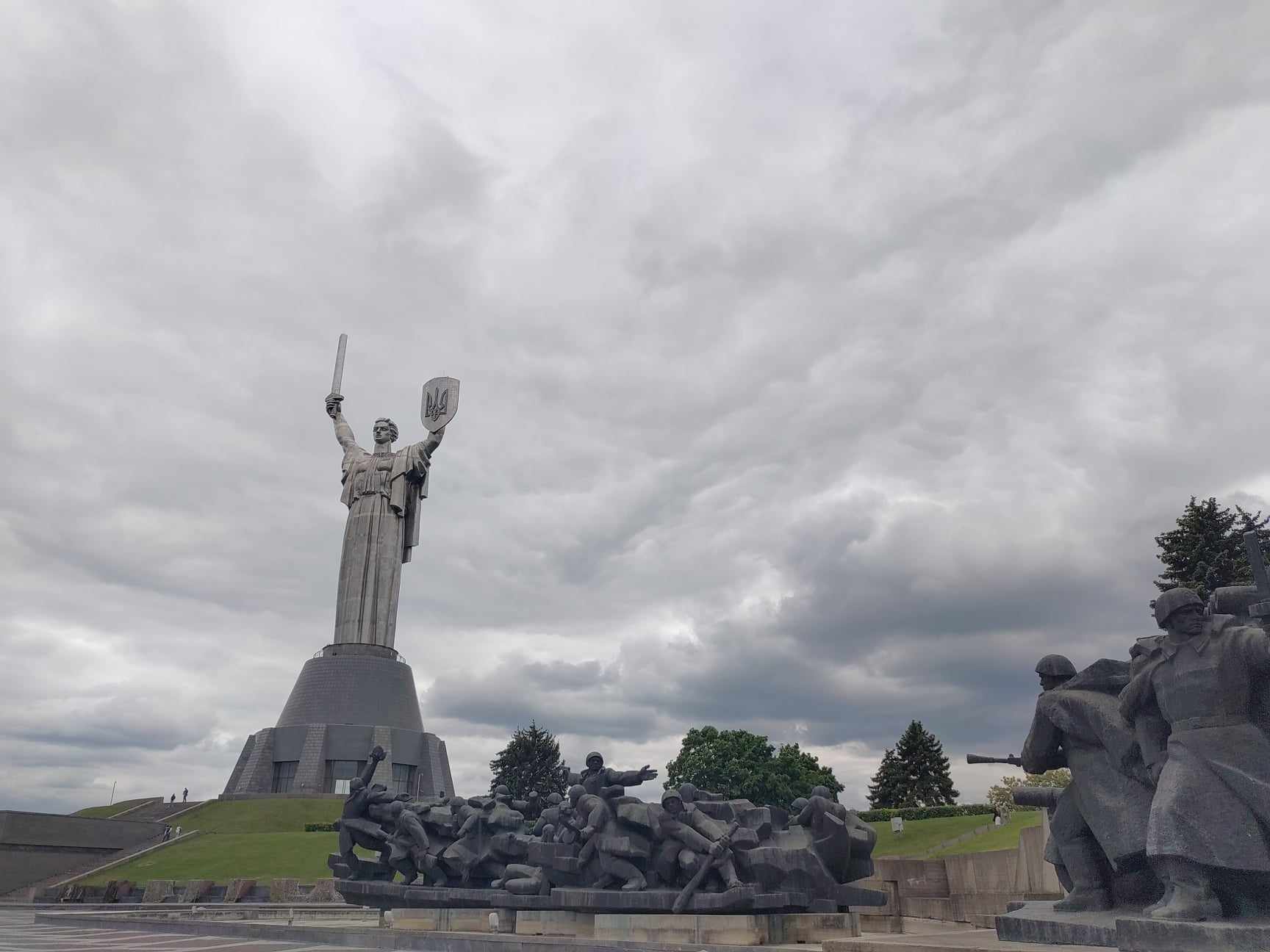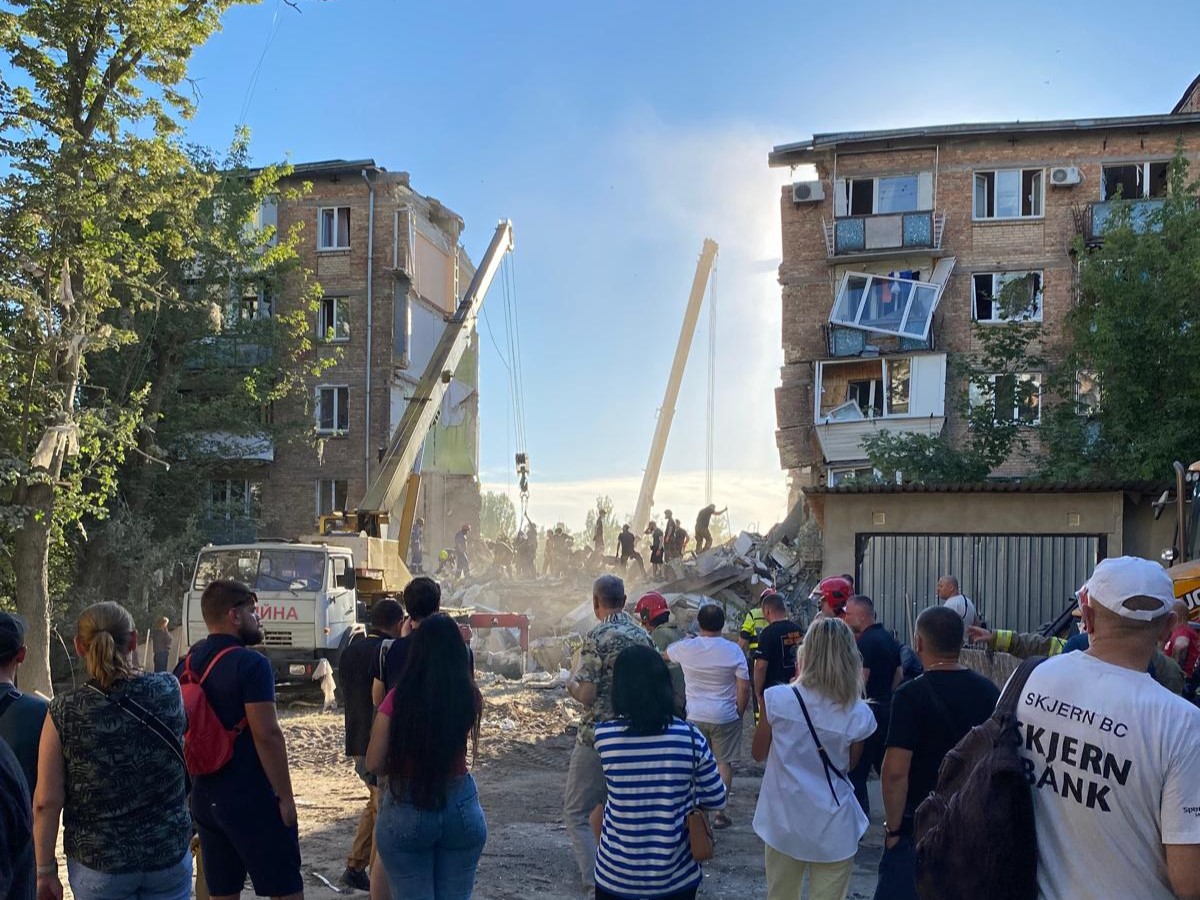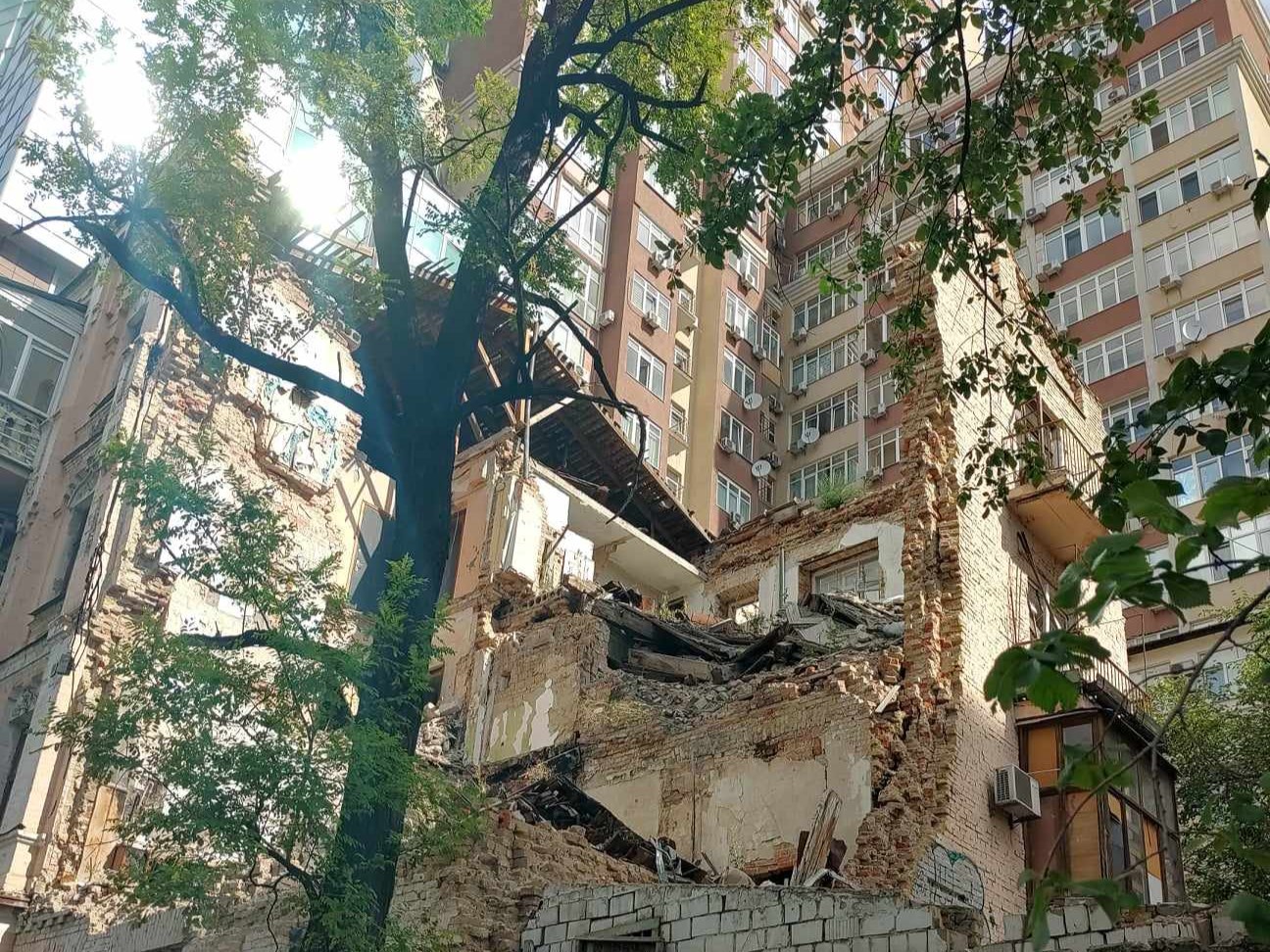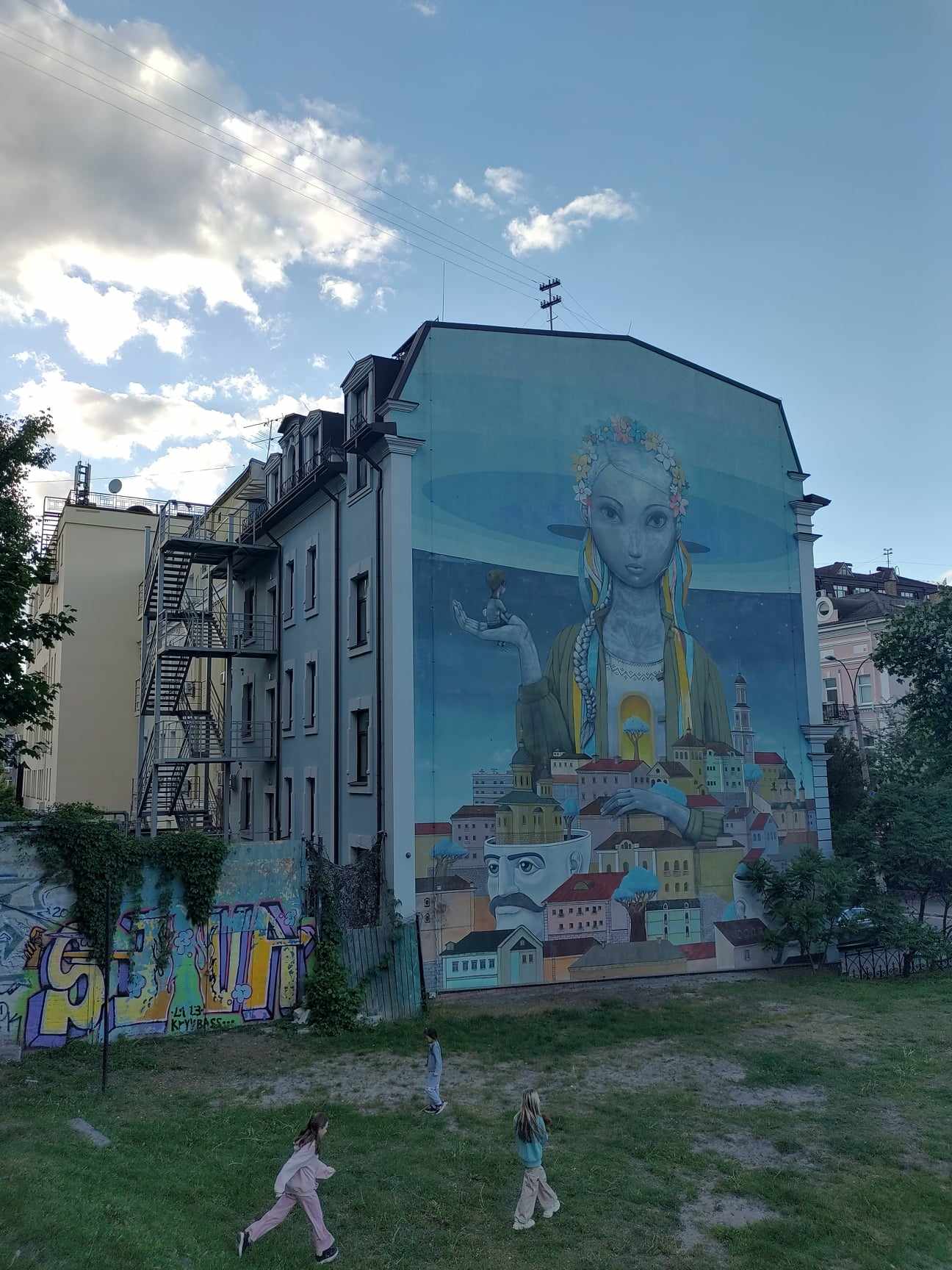Arriving in Ukraine
Arriving in Kyiv, Ukraine, after the slightly protracted state of limbo between receiving the acceptance email from UNHCR and setting off from Jersey, I had mixed emotions. It was both relieving and unsettling, exciting and tense. Entering the country at the beginning of May, I was reminded of the miracle that is modern travel as I made my way overland. Before the full-scale invasion, Jersey-London-Kyiv would have been a quick hop and a stop. Now, comparatively in relative comfort to the travellers of days gone by, the journey is made by land from Poland, through the border, and halfway across the country, taking two days. The vastness and beauty of Ukraine is apparent when making the journey to Kyiv, which sits in the north-central region along the Dnipro River. Entering from the Polish border, green plains dotted with quaint-looking houses, woods, and fields characterise the landscape. The first stop of this journey was Lviv, one of Ukraine’s largest cities and one of its most important. From this beautiful western city, I would take an overnight train to the capital, but not before being faced with a stark and pretty heart-wrenching reminder of the Ukrainian reality: soldiers (some barely on their way to being twenty) tearfully embracing their children and wives and saying goodbye, the latter staying in relative safety (save the odd missile), the former on their way to the front.

Working for UNHCR/UNHCR's work in Ukraine
Upon arrival, I immediately began my work within the external relations team for UNHCR's country office in Kyiv. As an associate reporting officer, my work centres around gathering information from our Ukraine offices to produce reports summarising the situation. Essentially, the reporting team helps donors and the general public to understand where their money is going and where it's needed. It also allows our internal network to keep up to speed on new developments. So far, it's been exciting to see how these various moving cogs contribute to the massive UNHCR wheel in Ukraine. Despite the age-old tale of public fatigue that comes with any lengthy war or humanitarian crisis, the scale of the operation is enormous compared to other UNHCR operations worldwide (funding earmarked for UNHCR Ukraine amounted to $452 million last year). With this scale of operation naturally comes a plethora of challenges, as well as a responsibility to fulfil its mandate of protecting refugees (6.5 million of which have fled Ukraine), internally displaced people (amounting to over 3.5 million), returnees, war-affected and stateless people. Seeing UNHCR acting towards this mandate didn't take long. In May, the situation in the northeast part of Ukraine began to deteriorate rapidly as Russian troops pushed forward in a ground and air offensive towards Kharkiv, Ukraine's second most populous city. Such surges into Ukrainian territory have since then been repeated in the four months I have been here, most recently in the Donetsk and Sumy regions. In all cases, tens of thousands of people were evacuated, or evacuated themselves, from their towns and villages to flee the hostilities. The response from UNHCR and its partners included providing assistance in the form of essential relief items, psychosocial and legal aid, cash assistance, and working to provide shelter/accommodation options. The work is primarily carried out by UNHCR’s implementing partners - local NGOs and community-led organisations with a wealth of relevant expertise and knowledge, who work with regional government on solutions and strategies to respond to the ongoing emergencies and protracted displacement that follows them.
Two and a half years on from the start of the full-scale invasion, it's still possible to see the destruction that Russian forces wrought on the Kyiv region. Their troops brutally attacked and occupied large swathes of territory and numerous towns and villages, their advance only being halted some 20 miles away from the centre of the capital. I saw some of this destruction on a recent field visit to some of UNHCR's ongoing projects in this area. Despite significant repairs already completed and tireless ongoing reconstruction efforts, whole apartment blocks are still entirely decimated, with bullet holes pockmarked on the walls and the carcasses of cars and tanks lying abandoned on the streets. We passed a ‘core home’ installed by UNHCR, which is a pre-fabricated house placed on the land of properties that have been totally destroyed. A family had just moved in, right next to the crater and the memory of their old home. Looking around, it is strikingly evident that when the war is over, the reconstruction efforts for the rest of the country will be unimaginably vast. Elsewhere across Ukraine, in the communities not as close to the direct fighting that host the 3 million internally displaced people within Ukraine, efforts are concentrated on finding durable solutions and attempting to integrate people who can’t return home into the local population, so they can lead as normal a life as possible while the war continues.

Life in Kyiv
Work aside, daily life in Kyiv is a life I love, despite the fact it’s full of the strange juxtapositions of a country at war. Martial law mandates a midnight curfew, but people in Kyiv continue to live as normal a life as possible in defiance of Russian terror. Summer evenings in Kyiv are defined by these acts of defiance - cafes and bars are full of people, and the streets and parks are teeming with life. Last weekend was no exception and perhaps goes a little way to explaining the bizarre balance of reality here. I walked over the impressive Parkovyi Footbridge that leads to Kyiv's Trukhaniv Island, situated in the middle of the Dnipro river. As we crossed, enjoying the last of the summer sun, we stopped in our tracks as the always jarring drone of air raid sirens blared out across the city. On the banks of the river, amateur fishermen continued sipping their beer and taking drags of their cigarettes, seemingly unbothered by the alarm, while someone on the zipline that connects the city proper to the island whooshed past. These days, we benefit from social media channels that provide almost immediate updates on security situations. We took out our phones and checked Telegram, a controversial but popular app used to disseminate information on attacks to people around Ukraine. "Just a 'MiG,'" someone said, and we continued walking. Whenever a MiG takes off in Russia, a countrywide air raid alert is issued, as these jets carry allegedly hypersonic Kinzhal missiles, which can reach anywhere in the country within a few minutes of launch.
Air raid sirens have become a haunting addition to the soundtrack of city life, one that people have naturally adapted to. Rolling blackouts are another feature of life in Kyiv during wartime, a result of Russia's devastating attacks on Ukrainian civilian infrastructure. During a recent attack on the city during the working day, my colleagues and I spent hours sitting underground in a pitch-black bomb shelter, light from laptops illuminating our faces as we continued to work. Despite the sometimes difficult sleep deprivation, however, it's important to remember that inconvenience here in the capital is relative compared to areas closer to the frontline, where civilians are bombarded daily, children often spend half of their days in shelters-cum-schools underground, and people must attempt to survive the incredibly harsh Ukrainian winter without heat. In Kyiv, people are grateful for the sense of safety felt from being here, where air defence that shoots down missiles is strong. Far too often, though, the missiles hit their mark, or the debris from those that were shot down means catastrophe for anything below. This was the case in the many deadly attacks in July and August, when Russian forces launched a torrent of missiles and drones that targeted towns and cities across the country in a series of super assaults that at times overwhelmed Ukraine’s air defence. In one such attack, on the 8th of July, eight missiles hit Kyiv, one of which targeted and hit Okhmatdyt, Europe’s largest children’s hospital. Devastating days like that one, where civilians, children, and humanitarians delivering assistance are deliberately targeted and killed, only seem to harden the resolve of Ukrainians in this unjust war. In the same vein, the cliché of people coming up against impossible challenges in an impossible time and showing themselves to be incredibly resilient and adaptable seems accurate from what I’ve seen. The sense of community and solidarity I witnessed here in Kyiv in the aftermath of that attack was palpable. Kyivans from all walks of life organised in the immediate hours and days after to clean up and provide vital assistance to victims and their families. I can't even imagine, however, what it's like for my Ukrainian counterparts and colleagues who have to endure the knowledge that their friends and family (and potentially themselves, for men) are being forced into incredibly dangerous situations and suffering closer to the front.

In conclusion…
Despite everything, I’m incredibly happy and excited to be spending the next two years here in Kyiv, and I am grateful for the opportunity this job, and Kyiv, has given me. I’m reminded daily that as long as the war continues here, so does the need for humanitarian assistance, just as it does in Gaza, Sudan, Lebanon and the countless other global crises we see unfolding all around us. Donors' funding and continued work are vital to help alleviate suffering and rebuild people's lives. It truly makes a difference. I’m proud to play a small part in Jersey's contribution to these efforts.


